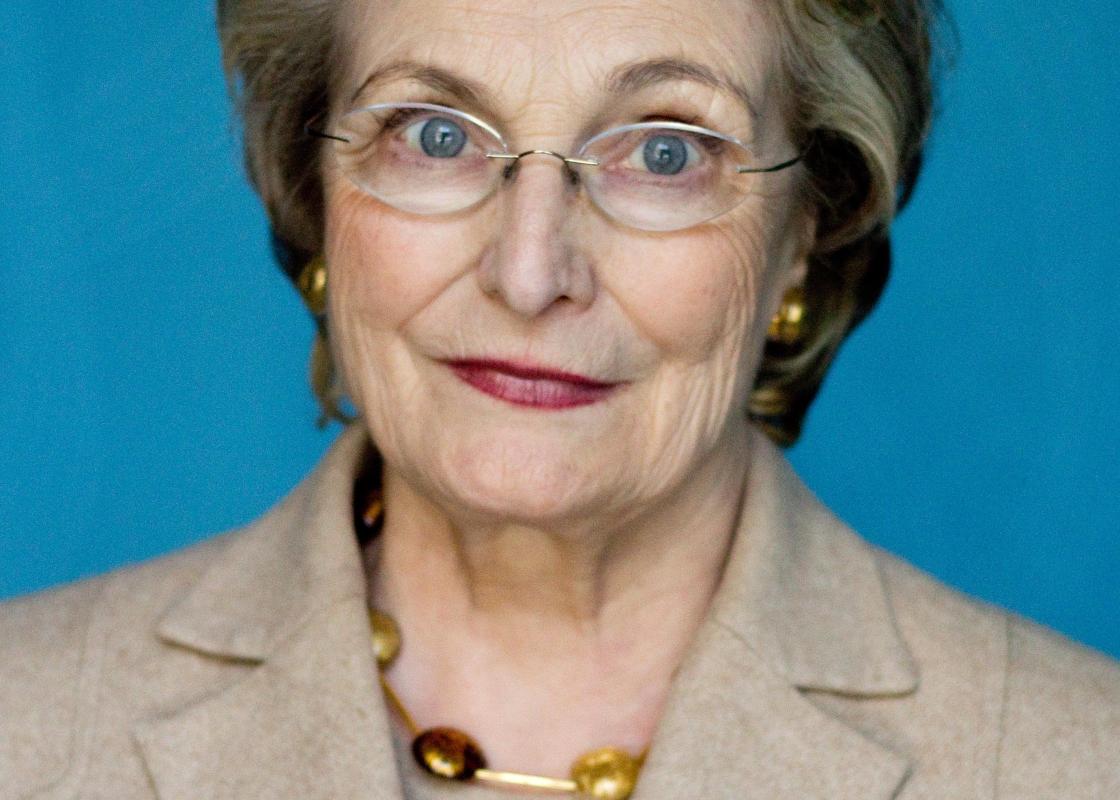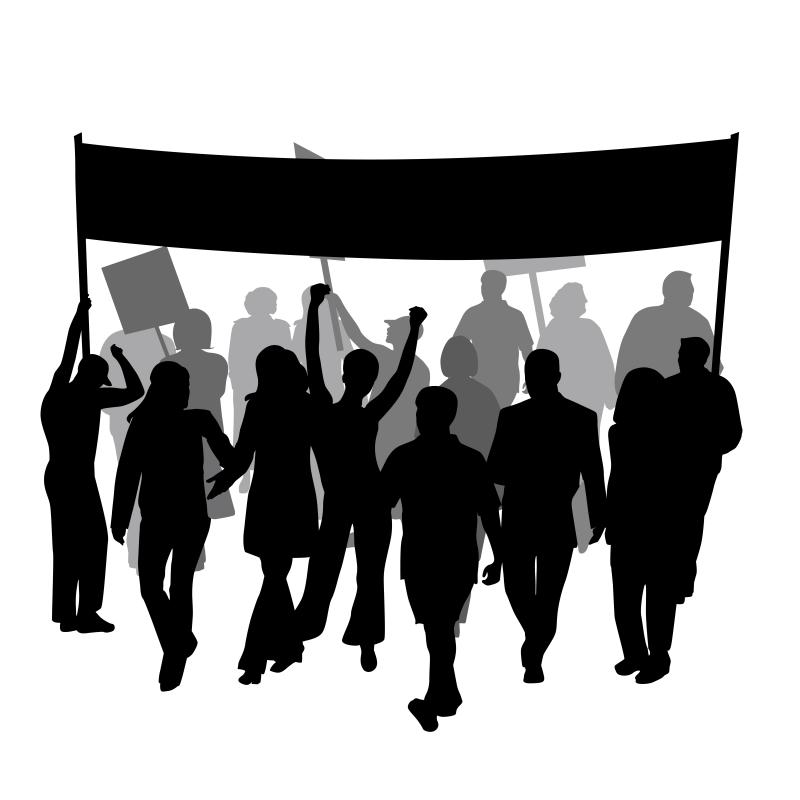Meet 77 year-old Helga Maria Hernes. She was the leader of the gender equality committee that developed the first recommendations on gender quotas as a women’s political measure, she was the chairperson of the board and subsequently director of research for the first Secretariat for Women and Research, and she has been the editor of seventeen books in the book series “Women’s living conditions and life cycle”. Nevertheless, she is probably most famous for having developed the concept of the woman friendly state, aka state feminism.
We are at the Peace Research Institute Oslo (PRIO) in Oslo city centre – Helga’s work place. She is “the state feminist personified” – at least that is what she was called in a close-up interview with author Line Baugstø many years ago. In the portrait book Statsfeministen, statsfeminismen og verden utenfor (“The State Feminist, State Feminism and the World Beyond”) from 2013, she is referred to as the “mother of state feminism”. The book is written by Inger Skjelsbæk, one of Hernes’ colleagues at PRIO. Both Helga Hernes and Inger Skjelsbæk are members of the work community Gender Team at PRIO.
In her book, Skjelsbæk describes a business trip to New York. Skjelsbæk describes Helga as “proud, but not arrogant” and as “a combination of strict and orderly, warm and caring”.
The colleague’s admiration for Hernes is clear throughout – an admiration that springs from Helga’s role not only as an influential social scientist, but also as a professional who knows how to support and bring out the talents in the people surrounding her.
See also: The Norwegian gender quota law
Communicative researchers
Helga has prepared for the interview by going through her own archive of news stories from the 1970s and 80s. The news articles bear titles such as “Women are kept outside of politics”, “Major lift within women’s research”, and “Incendiary proposal at the University: Gender quotas and special treatment of women”.
One of the articles, from the national newspaper Aftenposten on 13 February 1980, has a close-up photograph of a young, half-smiling Helga Hernes with fringe and shoulder length hair. She is standing in front of a newspaper stand wearing a suit jacket. She looks firmly, but at the same time mildly, into the camera.
Underneath the picture it says that she is about to take up the position as Director of research at the Secretariat for Women and Research at the Norwegian Research Council for Science and the Humanities. Someone, according to Helga the Aftenposten journalist Reidun Kvale, has written the following commentary in pink ink: Finally! I’m not sending you the entire paper, but this excerpt is good enough, right? And how pretty you look!
“We had a network of female journalists with whom we communicated. It was part of our strategy not thinking that talking to journalists was below our standards,” says Helga.
At a time when other research communities were reluctant to talk to the media, the Director of research at the Secretariat for Women and Research chose a different strategy.
“Some claimed that we were extremely publicity-seeking. I responded that we intended to continue that way.”

The feminist movement in the 70s
She is born on 16 January 1938 in Deutsch-Krone, West Prussia, which was then part of Germany and is today a part of Poland. After earning her doctoral degree in the U.S., she arrived in Bergen, Norway, on 16 May 1970. She had been appointed a position at the University of Bergen, and she had met and fallen in love with a Norwegian man in the US, whom she had later married. Her marriage to Gudmund Hernes lasted until 1978. She has kept his name.
Her encounter with Norway turned out differently from what she had been expecting.
“I thought I came to the progressive Scandinavia,” says Helga.
But in Bergen in 1970, just two years after the famous rebellious year of 1968, there wasn’t as much feminist engagement as expected.
“How was your encounter with the feminist movement?”
“We started the feminist movement,” says Helga.
“There were two things we really fought for in the 70s. One was kindergartens, to enable women to enter the labour market, and the other was the legalisation of abortion.”
Fairly quickly after her arrival in Norway, she and some colleagues established their own women’s association at the University of Bergen. They met one evening every week to discuss women’s rights. Other women established similar feminist groups across the country, and eventually they all came together and founded the organisation The Women’s Front in 1972.
Helga attended the foundation meeting. In 1974, she resigned from the organisation. It was her opinion that the organization had become completely dominated by the Workers’ Communist Party (AKP-ml).
“The tone wasn’t very refined - or friendly,” she recalls.
She kept attending meetings with her own women’s association. This group still has meetings, although now only once a year. Today she is member of an international peace and human rights organisation working for increased focus on women, but she never again became a member of a Norwegian feminist organisation. However, she brought the feminist perspective into her research.
Some claimed that we were extremely publicity-seeking. I responded that we intended to continue that way.
The Secretariat for Women and Research
Thus, women’s research developed with the feminist movement as its backdrop. In 1974, the Committee for Social Science Research at the Research Council at the time presented a report on women and research. A secretariat for women’s research was established, and the Committee decided upon Helga Hernes as the chair of the new secretariat board.
“I was employed by the Research Council on a gender quota basis,” she says.
“But I took some time to consider before I said yes to lead the board of the new secretariat.”
Shortly after its establishment, the secretariat decided to arrange national conferences where female social scientists could present their work and get feedback. They called this an “out-from-the-drawer-movement”. The aim was to encourage female researchers to publish more, since it was a well-known fact that male social scientists published far more scientific articles than their female colleagues did. In 1977, she helped establish Centre for Women’s Research in Bergen.
See also: What is Gender Research
Book series
Helga also came up with the idea to make a book series about women’s lives.
“The Research Council supported the idea, and the University Press (Universitetsforlaget) wanted to publish it. When they asked me how many books I envisaged, I said eighteen, and the board agreed with me.”
The Ministry of Children and Equality at time granted 600 000 Norwegian kroner in support of the project, and the book series was given the name “Women’s living conditions and life cycle” (Kvinners levekår og livsløp).
“ʻWomen’s living conditionsʼ offer the social and economic dimension, whereas ʻlife cycleʼ implies that women’s life cycle is crucially different from men’s. It had a lot to do with the gender segregated labour market, but also with the fact that child births affect women’s life cycles significantly more than men’s.”
The series included titles written by names that are well known within the women’s and gender research community today: Kari Wærness wrote about care work, Harriet Holter wrote Kvinner i fellesskap (“Female Fellowship”). The term “women’s culture” became particularly important. It had to do with how women as a group thought, acted, and behaved differently from men.
“There was a lot of focus on what was peculiar for women?”
“At the time, it was. I myself wasn’t particularly interested in that. I thought it was ridiculous to say that women had their own special culture. Even though we did have our own culture in a way, it was my opinion that this idea of a women’s culture is almost as saying that women are better human beings, which is a dangerous idea. I’ve always opposed that idea. It’s not a good idea to think that women are better people.”
The State and the women
A total of seventeen books appeared in the series “Women’s living conditions and life cycle”. Helga also wrote one herself: “The State – Women no admission?” (Staten – kvinner ingen adgang?) in 1982. The book was about how women are strongly underrepresented in the decision-making bodies. Their experiences, activities, and competence were not regarded as relevant by public decision-making bodies. It began with a study of how men and women are represented in state committees, where women were represented by only 10 per cent. It also described the social effort that was made by the major women’s associations, both the radical Women’s Front and the more traditional organisations such as Norwegian Women’s Public Health Association, without these organisations or the involved women having any particular political influence.
By the end of the 70s and the beginning of the 80s, however, the political parties began to realise that involvement with feminism was also a political revolution.
“Women with political talents became an asset. More and more parties introduced gender quotas, the Left Party being the first with their leader Eva Kolstad. The Labour Party was soon to follow.”
The underrepresented sex
“Gender quotas is a measure for which I take the credit,” says Helga.
In the early 70s, she was the leader of the Gender Equality Committee at the University of Bergen. The Committee submitted their first report in 1973, in which they recommended the introduction of gender quotas on appointments to university positions.
“Moderate gender quota implies that if a woman and a man are equally qualified for a position, the underrepresented sex – we never said women or men – should be appointed to the position. Radical gender quota meant that as long as a woman was qualified for a position, she should be appointed. Naturally, the latter was never implemented.”
“Of all the things I’ve contributed to, I think the introduction of gender quotas is the one measure that has had best effect. It is all about giving women access to power, which has increased the visibility of their competence,” she says.
“Moderate gender quotas were introduced in the universities. It was also adopted by several of the political parties. Even the political parties that didn’t officially adopt the gender quota system started nominating women to leading positions,” says Helga.
“Are gender quotas necessary today?”
“We should always be women conscious. Nowadays it is particularly discouraging that women have so little power and influence in the private sector. It is very interesting that we have a society in which gender equality has been achieved on so many areas, and yet the business and financial world is almost completely dominated by men.”
Gender quotas is a measure I take credit for.
A woman friendly state
The state feminism, then. Where did that idea come from?
“I first became known for the woman-friendly state. This does of course not imply any oppression of men, but rather giving women and men equal access to the state’s decision-making bodies and its services.”
The jurisdiction of the welfare state that was introduced in the 60s, 70s, and 80s was supposed to be woman friendly. Helga quotes herself from the introduction to the book Welfare State and Woman Power. Essays in state feminism from 1987:
“A woman-friendly state would not force harder choices on women than on men, or permit unjust treatment on the basis of sex. In a woman-friendly state, women will continue to have children, yet there will also be other roads to self-realization open to them. In such a state women will not have to choose futures that demand greater sacrifices from them than are expected from men. It would be, in short, a state where injustice on the basis of gender would be largely eliminated without an increase in other forms of inequality, such as among groups of women.”
Changes
State feminism, the way she defined it, started from the bottom, by the people and the feminist movement, and was directed towards the top, to the decision-makers holding the power. Today, many of its critics perceive it as the opposite, that the state feminism is forced upon the people from the top.
“You may well say that from the moment you create a jurisdiction it achieves a top-bottom character. It then has to do with the implementation of existing legislation that has been proposed by a government and passed in a parliament,” says Helga.
“But state feminism was initially not understood as something coming from the top. This was written in the late 80s, and at that time, we were fully convinced that there was something to be called a feminist movement. And many political scientists have regarded the popular movements as the source for political renewal – a Scandinavian phenomenon.”
“The slightly angry man in the street would probably not consider state feminism as something entirely positive.”
“No, and I am very aware of this. Inger [Skjelsbæk, the colleague who wrote the portrait book about Hernes] says that the first time she heard the term state feminism it came from a man who spat out the words on TV. And I know that many men find it absolutely horrific. But I did not intend this aggressively in any way. A historian once called it the vaginal state. I thought that was a pretty aggressive term compared to state feminism,” Helga laughs.
“For me, state feminism was a purely empirical description of what I thought I observed in the 80s and 90s: that a collaboration took place within a legal framework, in which gender equality became a fundamental value in the politics of the welfare state.”
Women and peace
In 1988, Thorvald Stoltenberg brought Helga into the world of politics. She represented the Labour Party as State Secretary in the Ministry of Foreign Affairs during two periods; from 1988-89 and from 1990-93. In 1990, she worked as deputy director of the Norwegian Broadcasting Corporation (NRK) for a short period. From 1993 to 1996, she was director of the interdisciplinary climate research institute CICERO. She was later appointed ambassador for Norway, first in Vienna, and later in Bern and in the Vatican State.
Since she hasn’t taken active part in research her entire life, she admits that she is not completely up-to-date on the field after it became common to talk about gender research rather than women’s research. And she doesn’t fully understand what queer theory and queer research is.
Today she is back in academia – part time. At the Peace Research Institute Helga is part of the so-called Gender Team, which receives much of its funding from the Ministry of Foreign Affairs, and works with women, peace, and security.
“The Achilles heel in many of the peace negotiations has been that only the competing parts are seated around the table. What is happening now, however, is that those who are affected by the conflicts and the actions of war, and those who are crucial contributors in rebuilding the societies, are included in the negotiations. Here the female perspective comes in,” she says.
The Gender Team base their work on a resolution passed by the United Nations’ Security Council in October 2000: Resolution 1325 on women, peace, and security. Currently they are also initiating a new project funded by the Research Council of Norway. It is titled Equal Peace, and will revolve around women’s participation in and access to peace negotiations.
See also: Open the door and let gender in
Power balance
Helga has been in academia, in politics, in the diplomacy, and is now back in academia.
“In every interview I have given I’ve said that the female perspective is absolutely fundamental to my Weltanschauung, my world view. With female perspective, I mean that you should always consider the consequences for women in everything that you do, think, and analyse.”
According to her, there are still areas where the battle for gender equality needs to be fought. There are, for instance, still major financial inequalities in Norway, we have a gender-segregated labour market, and gender equality is lacking in local politics.
“What do you think of the situation today?”
“It is my experience that many young women have a matter-of-fact self-consciousness and self-confidence, and that the norms of society don’t restrict women’s lives and choices the way they did in my own youth. In my current work place there are young women who have several children, they are able to combine that with a full professional career, and they are married to men with whom they share their family lives. Thus, even though there are still challenges, the gender balance is changed. The way I see it, the biggest revolution is that there is a more equal power balance between women and men today.”
Translated by Cathinka Dahl Hambro
- Helga Maria Hernes is a social scientist, politician, and diplomat.
- She was born in West Prussia in 1938, and received her doctoral degree in political science in the U.S. in 1970 before moving to Norway where she started working at the University of Bergen.
- She actively took part in the development of women’s research in Norway. From 1979 to 1983, she was director of research at the Norwegian Research Council for Science and the Humanities’s Secretariat for Women and Research.
- She was also initiator and editor of the book series “Women’s living conditions and life cycle” (Kvinners levekår og livsløp, 1982-87).
- Among her most well-known works are the books “The State – women no admission” (Staten – kvinner ingen adgang?) from 1982 and Welfare State and Woman Power. Essays in state feminism from 1987.
Source: Norsk biografisk leksikon


